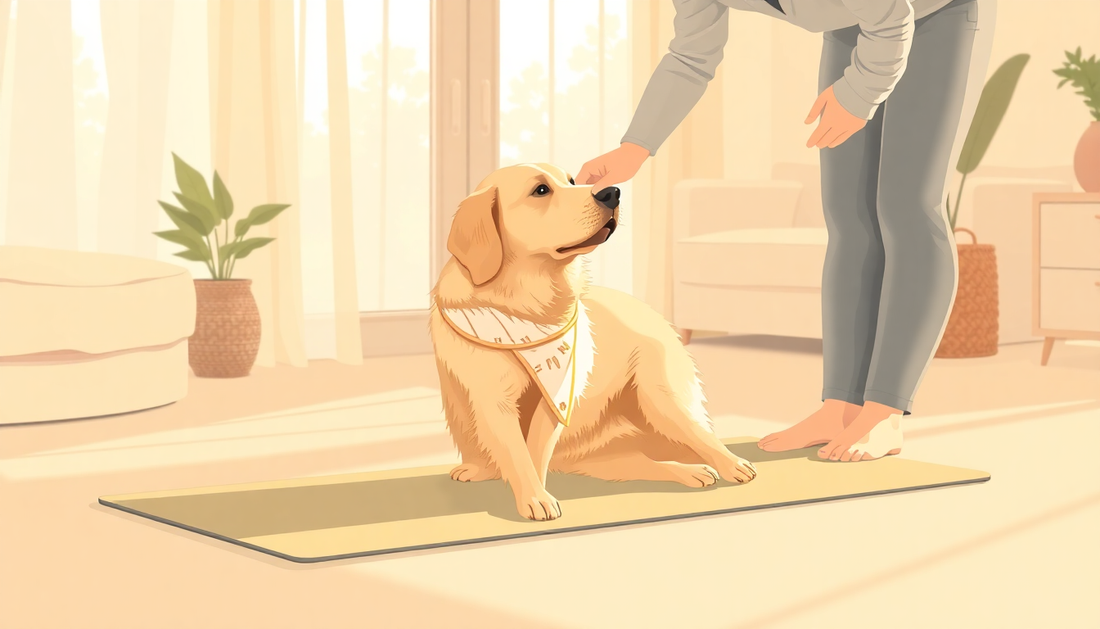
Gentle Exercises to Keep Your Senior Pet Happy and Healthy
Share
As our beloved pets grow older, it's essential to adapt their exercise routines to meet their changing physical needs. While senior dogs and cats may not be as spry as they once were, regular low-impact activity can still play a vital role in maintaining their health and well-being. In this blog post, we'll explore gentle exercises and activities that can help your older pet stay active, engaged, and comfortable during their golden years.
Understanding the Needs of Senior Pets
As our pets age, they often experience a range of physical changes that can impact their ability to exercise. Arthritis, joint stiffness, decreased muscle mass, and reduced cardiovascular endurance are just a few of the common challenges faced by senior dogs and cats. It's important to recognize these changes and adjust your pet's exercise routine accordingly.
Signs that your pet may need modified exercise include:
- Reluctance to go on walks or participate in playtime
- Difficulty getting up from a lying or sitting position
- Limping or favoring one leg
- Decreased stamina or tiring easily during activity
Before starting any new exercise program, it's always a good idea to consult with your veterinarian. They can help you understand your pet's specific needs and provide guidance on safe, appropriate activities.
Gentle Exercise Options for Senior Dogs
Walking is one of the best low-impact exercises for senior dogs. Start with short, frequent walks and gradually increase the duration as your pet's fitness improves. Avoid steep inclines or uneven terrain, which can be challenging for older dogs. Instead, focus on flat, smooth surfaces that are easy on their joints.
In addition to walking, consider incorporating gentle mobility exercises into your senior dog's routine. Stretching, range-of-motion movements, and balance exercises can help maintain flexibility and muscle tone. Avoid high-impact activities like running, jumping, or playing fetch, as these can be too strenuous for older dogs.
If your senior dog has mobility issues, there are a variety of assistive devices that can help. Supportive harnesses, dog strollers, and ramps can make it easier for them to navigate their environment and participate in gentle exercise.
Indoor Activities for Senior Pets
When the weather is less than ideal or your pet's mobility is limited, there are plenty of indoor activities that can keep them mentally and physically engaged. Brain games, such as food puzzles or hide-and-seek, can provide valuable mental stimulation and encourage problem-solving skills.
Gentle stretching and low-impact exercises can also be performed indoors. Consider teaching your senior pet some simple tricks or commands, which can help maintain their cognitive function and provide a sense of accomplishment.
For cats, interactive toys that encourage gentle movement, such as feather wands or laser pointers, can be a great way to keep them active without overexerting themselves. Providing elevated resting spots and scratching surfaces can also help senior cats stay mobile and engaged.
Supporting Senior Pet Mobility
In addition to regular exercise, there are other ways to support your senior pet's mobility and overall well-being. Joint supplements containing glucosamine, chondroitin, and omega-3 fatty acids can help reduce inflammation and improve joint function. Mobility aids like orthopedic beds, non-slip flooring, and ramps can also make it easier for your pet to move around comfortably.
When creating an exercise routine for your senior pet, be sure to monitor their response and adjust the intensity as needed. Pay close attention to any signs of discomfort or fatigue, and be prepared to modify or take breaks as necessary. The goal is to keep your pet active and engaged without causing undue stress or strain on their aging body.
Tailoring Exercise to Individual Needs
Every senior pet is unique, and their exercise needs may vary depending on their age, breed, and overall health condition. A senior Labrador with arthritis may require a different exercise plan than a senior Chihuahua with a heart condition. By working closely with your veterinarian and paying attention to your pet's individual cues, you can develop a customized exercise routine that keeps them happy, healthy, and thriving in their golden years.
Conclusion
Staying active and engaged is just as important for senior pets as it is for their younger counterparts. By incorporating gentle, low-impact exercises into your pet's daily routine, you can help them maintain their mobility, cognitive function, and overall quality of life. Remember to consult with your veterinarian, monitor your pet's response, and be prepared to adapt your approach as their needs change. With a little creativity and care, you can help your senior pet enjoy a happy, healthy, and active lifestyle well into their golden years.
